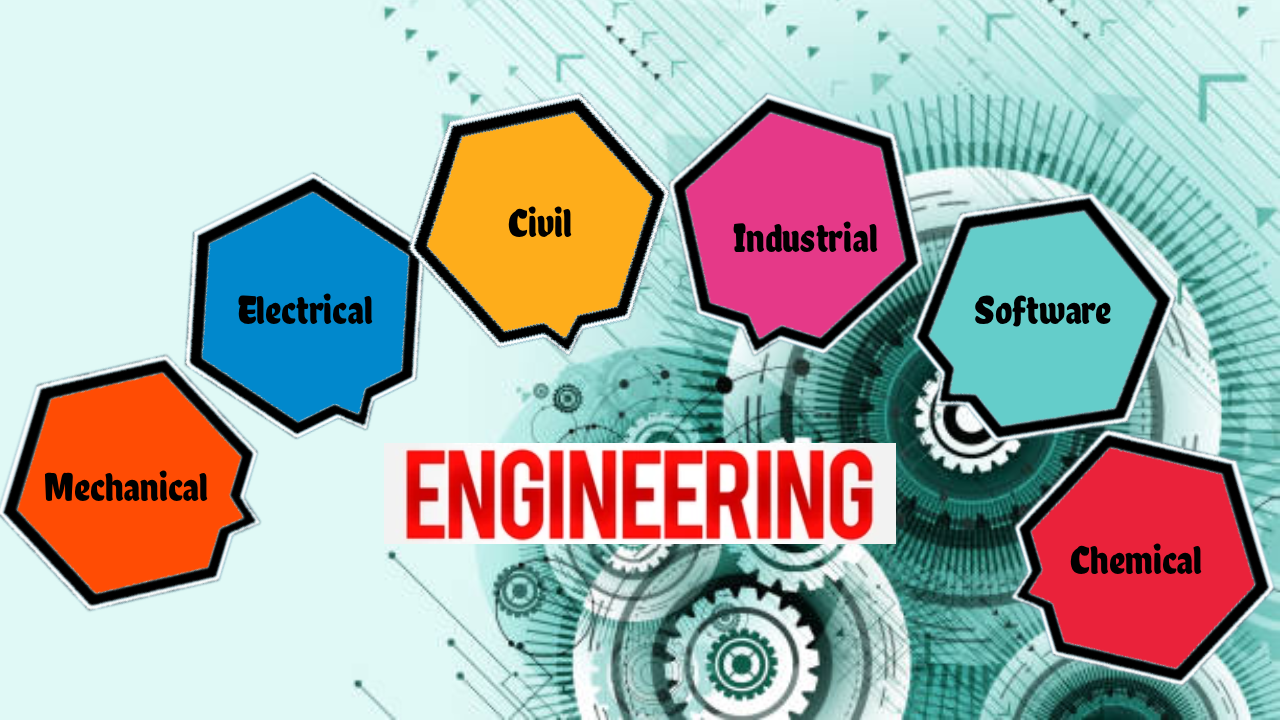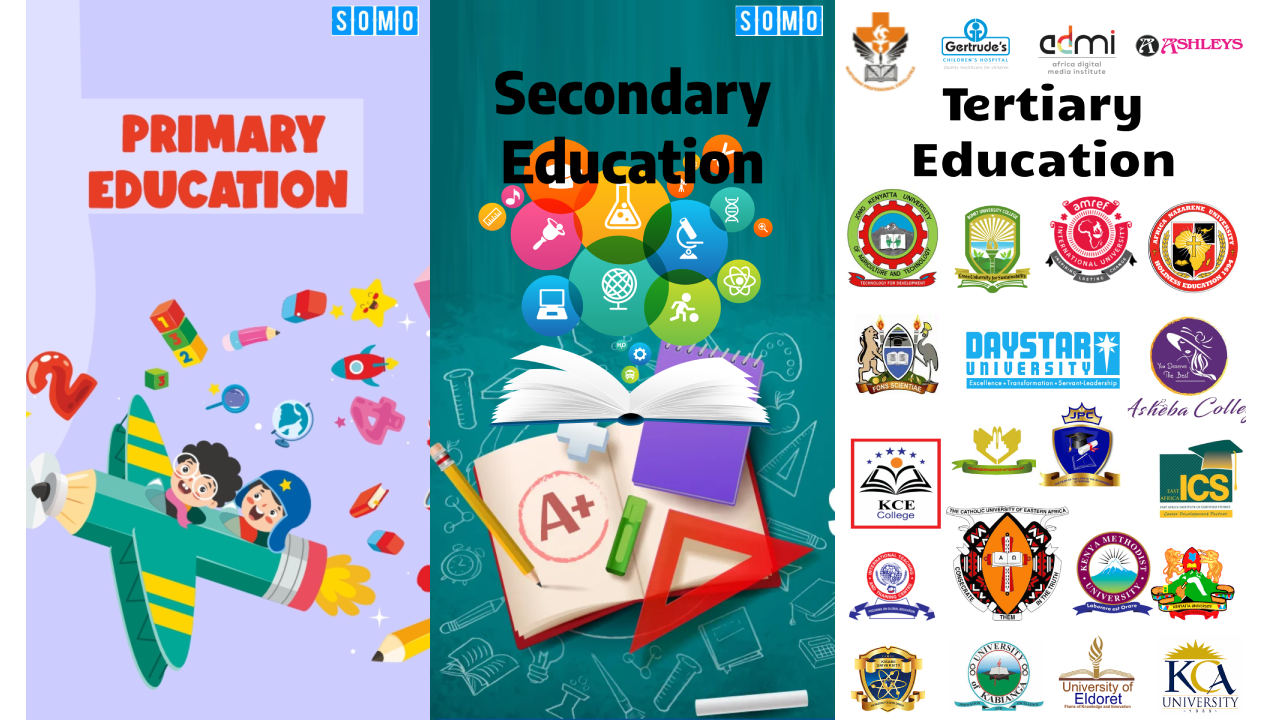
Certificate in Accounting and Management Skills (CAMS) program by kasneb is for persons who wish to qualify and work as entry level accounting and management personnel in small and medium enterprises, non-governmental organisations (NGOs), public sector entities and related areas.
The CAMS Examination is held twice yearly in May/June and November/December. The examination is divided into two levels, with Level I comprising four papers while Level II has three papers, making a total of seven (7) papers.
A candidate is required to pass a lower level before progressing to the higher level. However, with effect from November 2019 sitting, a candidate with two or less referrals in Level I may combine the referral papers with papers in Level II.
The examination is rigorous and standards are high and therefore a candidate is advised to devote approximately the equivalent of six months of full time study for each level of the examination.
Ideally, a student should be able to complete the CAMS examination in a period not exceeding one year.
Students taking the CAMS examination are advised to look for ways and means of acquiring practical experience so that they can match progress in examination with competence in performance of duties in the work environment.
Entry Requirements
A person seeking to be registered as a student for the CAMS examination must show evidence of being a holder of one of the following qualifications:
- Kenya Certificate of Secondary Education (KCSE) examination with an aggregate average of at least grade D+ (D+).
- Such other certificates as may be approved by kasneb.
Persons intending to take the November/December examinations must register as students not later than 15 September while those intending to take the May/June examinations must register as students not later than 15 March.
kasneb reserves the right to refuse to register any applicant who in its opinion is not fit and proper to be registered as a student.
Similarly, kasneb reserves the right to cancel the registration of any student who in its opinion is not fit and proper to be a student of kasneb.
Progression Rule
A candidate must attempt and pass the CAMS Level I examination before proceeding to the CAMS Level II examination.
Duration of Registration as a Student of kasneb
- A registered student of the CAMS Examination will be required to complete the examination within a maximum period of two years provided that the candidate shall complete: The CAMS Level I examination by the end of the first year since registration.
- The CAMS Level II examination by the end of the second year since registration.
kasneb reserves the right to cancel the registration of a student who fails to complete the CAMS Examination within the stipulated time.
A student whose registration is cancelled under the rules in this paragraph may not be eligible for re-registration. However, kasneb reserves the right to vary or amend the regulations.
Objectives of Certificate in Accounting and Management Skills (CAMS)
The Certificate in Accounting and Management Skills (CAMS) program by kasneb aims at equipping a candidate with the competencies required to provide basic accounting and management services to micro, small and medium enterprises sectors, non-governmental organisations (NGOs) and public sector entities.
Aims of CAMS Level I Examination
To equip the candidate with knowledge and skills to, among other responsibilities:
- Apply principles of entrepreneurship and management.
- Apply basic concepts of law and ethics in practice.
- Apply fundamental ICT skills.
- Undertake basic mathematical analysis to assist in decision making.
- Provide a basis for entry into CAMS Level II examination.
Aims of CAMS Level II Examination
To equip the candidate with knowledge and skills to, among other responsibilities:
- Prepare basic financial statements.
- Undertake basic audits.
- Compute taxes at a basic level.
- Undertake administrative duties at lower levels of management.
- Apply principles of marketing and communication in practice.
- Provide a basis for entry into the diploma examinations.
Tuition
Candidates pursuing the CAMS will be required to attend tuition in accredited training institutions. The tuition may be class-room based or through distance and e-learning (DEL) modes of study.
Assessment
Assessment will be based on continuous assessment tests (CATs) administered by the accredited training institutions and the examinations administered by kasneb. The CATs will account for 15% of the total score while the kasneb examination will account for 85%. A candidate must have both CAT and final examination scores in order to be assessed and awarded a result.
Other policies, rules and regulations
The other policies, rules and regulations applicable on kasneb examinations will also apply to the CAMS.
What you will study
SUMMARY OF THE CERTIFICATE IN ACCOUNTING AND MANAGEMENT SKILLS (CAMS) EXAMINATION SYLLABUS
LEVEL I
- Paper No. 1 Principles of Entrepreneurship and Management
- Paper No. 2 Introduction to Law and Ethics
- Paper No. 3 Fundamental ICT Skills
- Paper No. 4 Fundamentals of Business Mathematics
LEVEL II
- Paper No. 5 Foundations of Accounting and Auditing
- Paper No. 6 Elements of Public Finance and Administration
- Paper No. 7 Principles of Marketing and Communication
PAPER NO.1: PRINCIPLES OF ENTREPRENEURSHIP AND MANAGEMENT
GENERAL OBJECTIVE
This paper is intended to equip the candidate with the requisite knowledge, skills and attitudes in entrepreneurship and management of small and medium size enterprises (SMEs) and other entities in the public and private sectors.
1.0 LEARNING OUTCOMES
A candidate who passes this paper should be able to:
- Identify, select and implement new entrepreneurial opportunities
- Apply basic management and governance concepts in practice
- Identify and select the sources of finance for an entity
- Implement fundamental credit management concepts in practice
- Apply entrepreneurship and management knowledge in response to emerging trends.
CONTENT
1.1 Introduction
- Definition of entrepreneurship
- Characteristics of entrepreneurs
- Importance of entrepreneurship
- Challenges faced by entrepreneurs
- Entrepreneur’s contribution to development
1.2 Role of innovation in entrepreneurship
- Methods of generating business ideas
- Role of creativity
- The creative process
- Approaches to creative problem solving
- The innovation process
- Types of innovation
- Sources of innovation
- Principles of innovation
- Protection of business innovations and ideas
1.3 Assessing entrepreneurial opportunities
- Overview of the role and purpose of market research
- Problems encountered in selecting new ventures
- Factors considered in setting up a new venture
- Factors that determine success of new ventures
- Risks facing SMEs
1.4 Creating a new venture
- Forms of business ownership
- Buying an existing business
- Franchising
- Sources of finance for a new venture
- Simple business plans: purpose, format
1.5 Entrepreneurial growth and technology
- Importance of business incubators
- Life-cycle of an enterprise
- The success and failure factors at every stage of growth
- Use of internet, e-commerce and m-commerce
- Electronic and mobile money transfers
- Creating a competitive advantage
- Goodwill
- Role of technology
1.6 Sources of finance for SMEs
- Internal and external sources of finance
- Bootstrapping
- Advantages and disadvantages of the sources of finance
- Factors to consider when choosing a source of finance
1.7 Managing credit in SMEs
- Types and purposes of credit
- Credit limits
- Credit control
- Types of discounts
- Bad debts and their control
1.8 Background on management
- Definition and importance of management
- Principles of management
- Levels of management
- Management skills
- Functions and roles of managers
- Qualities of an affective manager
1.9 Managing routine office operations
- Handling incoming and outgoing mail and calls
- Centralisation and decentralisation of office services
- Filing and retrieval of information
- Essentials of a good filing system
- Automated filing systems
1.10 Managing people
- Duties and qualities of a supervisor
- Teamwork
- Motivation
- Conflict management
- Health and safety issues
1.11 Introduction to governance
- Principles of good governance
- Importance of governance
- Best practices in good governance
1.12 Emerging issues and trends
PAPER NO.2: INTRODUCTION TO LAW AND ETHICS
GENERAL OBJECTIVE
This paper is intended to equip the candidate with the requisite knowledge, skills and attitudes to apply general principles of law and uphold ethics in various operating environments.
2.0 LEARNING OUTCOMES
- A candidate who passes this paper should be able to:
- Demonstrate knowledge of essential elements of the legal system
- Demonstrate knowledge of legal personality
- Apply general principles of law in practice
- Uphold ethical and moral principles in various environments.
CONTENT
2.1 Nature, purpose and classification of law
- Meaning of law
- Nature of law
- Purpose of law
- Classification of law
- Law and morality
2.2 Sources of law
- Constitution
- Legislation
- Common law and equity
- African customary law
- Islamic law
- Judicial precedent
2.3 The court system
- Establishment, structure, composition and jurisdiction of the courts
- Supreme Court
- Court of Appeal
- High Court
- Employment and Labour Relations Court
- Magistrates Court
- Court Martial
- Kadhi’s Court
2.4 The law of persons
- Natural persons
- Nationality, citizenship and domicile
- Artificial persons
- Unincorporated associations
- Incorporated association
2.5 The law of torts
- Nature of tort
- General defenses in the law of tort
- Negligence
- Defamation
- Limitation of actions
2.6 The law of contract
- Definition of contract
- Classification of contracts
- Formation of a contract
- Discharge of contract
- Remedies for breach of contract
- Limitation of actions
2.7 Sale of goods
- Nature of the contract
- Formation of a contract
- Terms of a contract
- Rights and duties of the parties
2.8 Legal requirements for starting a business
- Pre-registration procedures
- Registration requirements
- Licensing
- Other requirements; County Government requirements
2.9 Foundations of Ethics
- Ethical norms, morality, values and ethical culture
- Code of ethics; integrity, confidentiality, independence, others
- Standards of conduct and personal integrity
- Conflict of Interest and Related Party Transactions
- Whistle blowing
2.10 Linking ethics, laws and regulations
- Legislative provisions on ethical conduct; The Constitution, Public Officers Ethics Act, other legislative and regulatory requirements
- Role of , professional bodies and other regulatory bodies in enforcing ethical conduct
- Penalties and sanctions for unethical conduct
2.11 Emerging issues and trends
PAPER NO. 3: FUNDAMENTAL ICT SKILLS
(The teaching of this unit should incorporate practical exposure of students to ICT systems)
GENERAL OBJECTIVE
This paper is intended to equip the candidate with the requisite knowledge, skills and attitudes to apply basic information communication technology (ICT) skills in various operating environments.
3.0 LEARNING OUTCOMES
- A candidate who passes this paper should be able to:
- Demonstrate knowledge of computer systems
- Select appropriate computer hardware and software
- Use various computer application packages
- Select various types of information systems
- Use computer networks and the Internet
- Adapt to emerging ICT trends
CONTENT
3.1 Introduction to ICT
- ICT overview
- Types of ICT
- Information centres
- Uses of ICT in business
- Impact of ICT in society
3.2 Computer systems
- Overview of a computer system
- Evolution of computers
- Elements of a computer system
3.3 Computer hardware
- Overview
- Input devices
- Output devices
- Processing devices
- Storage devices
- Communication devices
- Factors that determine the processing power of a computer
- Selection and acquisition of computer hardware
3.4 Computer software
- Overview of computer software
- System software
- Application software
- Other utility software
- Computer programming languages
- Selection and acquisition of computer software
3.5 Introduction to operating systems
- Overview of an operating system
- Functions of an operating system
- Types of operating systems
- Computer booting
- Selection and acquisition of operating systems
- Elements of a computer file
- Types of computer files
- Basic file design and storage
- File organisation
- File access methods
3.7 An overview of application packages
- Word processing
- Features of word processor
- Formatting and editing text
- Creating and formatting tables
- Spreadsheets
- Features of a spreadsheet program
- Formatting and editing spreadsheet
- Formulas and functions
- Charts and graphs
- Presentation software
- Features of a presentation program
- Typing and formatting text in slide
- Slide show
- Computerised accounting software
- Capturing data
- Features of accounting software (the candidate is advised and encouraged to develop proficiency in at least one accounting software)
3.8 Overview of information systems
- Systems overview
- Information systems
- Components of an information system
- Role of information systems in an organisation
- Classification of information systems
- Types of information systems
- Overview of information systems security and controls
3.9 Computer networks
- Computer networks concepts
- Computer network hardware and software
- Data transmission media
- Types of computer networks
- Advantages and limitations of networking
3.10 The Internet
- Applications of Internet
- Using search engines
- E-mails
- Electronic communication
- Introduction to the Internet
- Internet services – e-mails, www, instant messaging
- Searching for information on the Internet
- Internet service providers (ISPs)
- Applications of internet
- Impact of internet on society
3.11 Data security
- Overview of data security
- Threats and controls
- Data backup and restoration procedures
3.12 Mobile devices and applications
- Types of mobile devices
- Uses of mobile devices
- Mobile browsers
- Overview of mobile applications in service delivery
- Mobile applications security
3.13 Emerging issues and trends
PAPER NO.4: FUNDAMENTALS OF BUSINESS MATHEMATICS
GENERAL OBJECTIVE
This paper is intended to equip the candidate with the requisite knowledge, skills and attitudes to apply basic mathematical concepts to solve problems in business and other environments.
4.0 LEARNING OUTCOMES
- A candidate who passes this paper should be able to:
- Apply ratios, rates and proportions to interpret various scenarios
- Apply indices and logarithms in computations
- Use linear and matrix algebra to solve problems
- Apply basic calculus to solve problems
- Calculate measures of central tendency in statistics
- Construct and interpret basic graphs
CONTENT
4.1 Ratios, Rates and Proportions
- Ratios
- Rates
- Proportions
- Fractions
- Decimals
- Percentages
4.2 Indices and Logarithms
- Notations
- Laws of indices
- Simplifying and solving indices
- Logarithms
- Change of base
4.3 Linear Equations
- Linear equations in one unknown
- Linear equations in two unknowns
- Graphical solutions in two unknowns
4.4 Matrix Algebra
- Notations
- Operations
- Solving a 2*2 matrix
4.5 Sequences and Series
- Arithmetic progression(A.P):nth term, sum of first n terms
- Geometric progression (G.P): nth term, sum of first n terms
4.6 Commercial Mathematics
- Percentage profit and loss
- Simple interest and compound interest
- Appreciation and depreciation
- Basic income tax calculations
- Foreign exchange rates
4.7 Calculus
- Basic differentiation
- Stationary points/turning points
- Basic integration
4.8 Probability
- Definitions: event, experiment and outcome
- Types of events
- Rules/laws of probability
- Conditional probability
4.9 Descriptive Statistics
- Data collection
- Data presentation; Frequency distribution table
- Mean, mode and median
- Variance and standard deviation
4.10 Graphs
- Cartesian plane
- Linear graphs
- Graphs of simultaneous equations
- Graphs of quadratic equations
- Bar charts
- Time series graphs
- Pie charts
- Graphs of frequency distribution; histogram, polygon, frequency curve, ogive
4.11 Emerging issues and trends
LEVEL II
PAPER NO.5: FOUNDATIONS OF ACCOUNTING AND AUDITING
GENERAL OBJECTIVE
This paper is intended to equip the candidate with the requisite knowledge, skills and attitudes to prepare simple financial statements and apply basic auditing principles for entities in various sectors.
5.0 LEARNING OUTCOMES
- A candidate who passes this paper should be able to:
- Identify various types of assets and liabilities, income and expenditure
- Apply the double entry aspects of accounting
- Prepare basic financial statements for sole proprietorships, small and medium size enterprises (SMEs), non-governmental organisations (NGOs) and other entities.
- Prepare simple tax computations for SMEs
- Apply basic auditing principles
CONTENT
5.1 Introduction to accounting
- Definition of terms used in accounting
- Users of accounting information and their needs
- Qualities of good accounting information
- The accounting equation
- Accounting concepts, principles, standards and their importance
- Regulatory framework of accounting; the Institute of Certified Public Accountants of Kenya (ICPAK), regional accountancy bodies, professional ethics
5.2 Source documents
- Meaning of source documents
- Types of source documents
- Uses of source documents
- Relationship between source documents and books of account
5.3 Books of original entry
- Definition of books of original entry
- Classification of books of original entry
- Preparation of books of original entry
5.4 The ledger and the trial balance
- Definition of a ledger and an account
- Importance of ledgers
- Relationship between ledgers and accounts
- Classification of ledgers
- Nature of double entry
- Definition of a trial balance
- Importance of a trial balance
- Balancing of ledgers and transferring balances to trial balance
5.5 The cash book
- Definition of a cash book
- Types of cash books
- Types of discount
- Recording transactions in a cash book
5.6 Petty cash book
- Definition of petty cash book
- Imprest system
- Purpose of petty cash book
- Preparation of petty cash book
5.7 Accounting for ordinary revenue and expenses, assets and liabilities
- Accounting for revenue, including accruals and prepayments
- Accounting for expenses, including accruals and prepayments
- Accounting for account receivables, bad debts and allowances for doubtful debts
- Accounting for property, plant and equipment including depreciation, acquisition and disposal
- Simple bank reconciliation
- Accounting for accounts payable (excluding control account)
5.8 Correction of simple accounting errors, the suspense account
5.9 Preparation of basic final accounts
- Definition of final accounts
- Types of final accounts
- Preparation of final accounts from a list of balances (excluding adjustments); sole proprietorships, two-partner firms, corporate entities, NGOs
5.10 Computerised accounting systems
- Role of computers
- Application and accounting software
- Benefits of computerised accounting system
- Challenges of operating computerised accounting systems (the candidate is advised and encouraged to develop proficiency in at least one commonly used accounting package)
5.11 Nature, purpose and objectives of an audit
- Definition of auditing
- Relationship between auditing and accounting
- Types of audits; internal versus external audits
- Objectives of audits
5.12 Internal controls
- Definition of internal control system
- Role of internal control systems
- General controls on sales, purchases, cash and bank, inventory, income and expenditure
5.13 Conducting basic audits
- Key stages of an audit
- Preparing simple audit plans
- Audit evidence; types, approaches to gathering evidence
- Basic audits on sales, purchases, cash and bank, inventory, income and expenditure
- Difference between errors and fraud
- Basic applications of computer assisted audit techniques (CAATs)
- Elements of an audit report
5.14 General overview of public sector accounting and auditing
- The financial reporting chain in the public sector
- Role of the Director General Accounting Services and Quality Assurance
- Role of Kenya National Audit Office (KENAO) and other supreme audit institutions in audit of National and County Governments
- Parliamentary oversight of accounting and auditing processes
5.16 Emerging issues and trends
PAPER NO. 6: ELEMENTS OF PUBLIC FINANCE AND ADMINISTRATION
GENERAL OBJECTIVE
This paper is intended to equip the candidate with the requisite knowledge, skills and attitudes to apply the principles of public finance and administration and perform basic tax computations.
6.0 LEARNING OUTCOMES
- A candidate who passes this paper should be able to:
- Explain the nature and operations of public financial management (PFM)
- Apply basic principles of public finance and administration
- Comply with basic legislative provisions in procurement of supplies and services
- Compute simple taxes and prepare basic tax returns for individuals and small entities
CONTENT
6.1 Role of various arms of Government
- The Executive: The President, Deputy President, Cabinet, Director of Public Prosecutions, Principal Secretaries, Chief Administrative Secretaries
- The Judiciary
- The Legislature (including oversight committees on public finance)
- National and County Governments and their relationship
- Constitutional Commissions and Independent Offices
- Public Service Commission (PSC) and County public service boards.
6.2 Legal framework on public financial management
- General overview of public financial management as envisaged by the Constitution
- Overview of the Public Financial Management Act (elementary knowledge only):
- The National Treasury: Responsibilities, powers, relationship with County Treasuries, management of the Consolidated Fund, Contingencies Fund, Equalisation Fund, other funds
- County governments: County treasuries, Revenue funds, the County Executive Committee members for Finance
- Budget preparation process at national and county levels
- Role of other officers at national and county levels; accounting officers, receivers and collectors of revenue
- Annual financial reports at national and county levels (nature and content only, excluding preparation)
- Public Sector Accounting Standards Board (PSASB) (establishment and functions only)
6.3 Role of other institutions in PFM
- The Auditor General
- Controller of Budget
- Council of Governors
- Kenya Revenue Authority (KRA) structure, mandate and functions
- Other State Corporations
- Commission on Revenue Allocation (CRA)
- Public Debt Management office
6.4 Supply chain management in public entities (elementary knowledge)
- Definitions and terminologies
- General overview of Public Procurement and Disposal (PPD) Act:
- Bodies involved in the regulation of public procurement and asset disposal
- Responsibilities of County governments in public procurement and asset disposal
- Compliance by procuring entities; Role of accounting officers, procurement committees
- General procurement principles
- Methods of procurement
- Offences and penalties
- The concept of e-procurement
6.5 Introduction to taxation
- Purposes of taxation
- Principles of an optimal tax system
- Single versus multiple tax systems
- Classification of taxes and tax rates
- Types of taxes
6.6 Tax computations (basic level)
- Taxable and non taxable persons
- Sources of taxable income
- Tax on employment income, PAYE, personal reliefs, other reliefs
- Business income:
- Sole proprietorships
- Partnerships (excluding realignments and conversions)
- Incorporated entities
- NGOs
- Farming income
- Types of capital deductions (without computations)
6.7 Administration of income tax
- Types of assessments and returns
- Notices, objections, appeals and relief of mistake
- Appellant bodies
- Collection, recovery and refund of taxes
- Offences, fines, penalties and interest
- Application of ICT in taxation: iTax, other tax management systems
6.8 Administration of value added tax (basic level)
- Registration and deregistration of businesses for VAT
- Taxable and non taxable supplies
- Privileged persons and institutions
- VAT rates and computations
- VAT records
- VAT returns
- Remission, rebate and refund of VAT
- Rights and obligations of VAT registered person
- Offences, fines, penalties and interest
- Enforcement
- Objection and appeals: Requirements and procedure
6.9 Emerging issues and trends
PAPER NO. 7 PRINCIPLES OF MARKETING AND COMMUNICATION
GENERALOBJECTIVE
This paper is intended to equip the candidate with the requisite knowledge, skills and attitudes to apply the principles of marketing, communication and public relations in practice.
7.0 LEARNING OUTCOMES
- A candidate who passes this paper should be able to:
- Develop and implement simple marketing plans
- Communicate effectively in verbal and written forms
- Attract and retain customers in business
- Handle customer complaints
- Manage simple public relations issues
CONTENT
7.1 Introduction to marketing
- Marketing process
- Importance of marketing
- Roles of marketing
7.2 Marketing plan
- Importance of a marketing plan
- Uses of a marketing plan
- Marketing plan process
7.3 Market segmentation
- Meaning of market segmentation
- Importance of market segmentation
- Market segmentation process
- Target marketing
- Market positioning
7.4 Marketing mix
- Product
- Price
- Place
- Promotion decisions
- People
- Process
- Emerging marketing mix
7.5 Sales plan function
- Formulation of a sales plan
- Recruitment and selection of sales team
- Management of sales team
- Importance of an effective sales team
- Selling process
7.6 Contemporary Marketing
- Meaning of marketing information
- Internal records
- Marketing intelligence
- Analysing the macro environment
- Marketing information system
- Source of market information
7.7 Digital marketing overview
- Introduction to digital marketing
- Digital marketing concepts
- Digital marketing channels:
- Social media marketing (SMM)
- E-mail marketing and internet marketing
- Search engine optimisation (SEO)
- Display advertising
- Affiliate marketing
- Mobile marketing
- Multi-channel advertising
7.8 Introduction to communication
- Foundations of business communication
- Importance of communication
- The communication process
- Methods of communication
- Objectives of business communication
- Internal and external communication
- Communication systems and networks
- Principles of effective communication
- Channels of communication
- Barriers to business communication
7.9 Written communication
- Essentials of effective written communication
- Business correspondence
- Reports
- Memorandums
- Forms and questionnaire design
- Circulars and newsletters
- Notices and advertisements
- Publicity materials
- Press releases
- Graphic communication
7.10 Oral and non-verbal communication
- Oral communication in business
- Types of oral communication
- Effective listening
- Interview techniques
- Oral presentation skills
- Committees and conferences
- Preparing speeches
- Non-verbal communication
- Recognising and responding to non-verbal messages
- Interpersonal relationships
7.11 Contemporary communication techniques
- Teleconferencing
- Videoconferencing
- Mobile phone communication
- Electronic postal services
- Online business communication
- E-Mails
- VOIP
- Social media
- VPNs
7.12 Meetings
- Meaning of a meeting
- Types of meetings
- Role of Chairman and Secretary
- Maintaining order at meetings
- Recording of proceedings at meetings
- Use of information communication technology in meetings
7.13 Introduction to customer relations management
- Meaning of customer relations
- Types of customer relations
- Importance of customer relations
- Managing customer perception
- Customer survey
- Do’s and don’ts in customer relations
- Effective listening
- Effective use of telephone
- Customer care training
- Handling complaints
- Self-image as a dimension of relationship strategy
- Verbal and non-verbal strategies that add value to relationships
- Effect of appearance, voice, manners on relationships
7.14 Introduction to public relations
- Definition of public relations
- Distinction of public relations from marketing
- Roles and importance of public relations
- Steps to successful public relations
- Public relations skills and techniques; surveys, sponsorships, press, print media
- Role of Service Charters
- Role of corporate social investment in public relations
- Role of ICT in public relations
- Ethics in public relations
- Crisis management
7.15 Emerging issues and trends
Related articles
-

A Guide to Civil Engineering Degree and Diploma Programs in Kenya
08-Nov-2025 -

Electrical Engineering in Kenya: A 2025 Guide for KCSE Graduates
08-Nov-2025 -

Mechanical Engineering in Kenya: A 2025 Guide for KCSE Graduates
08-Nov-2025 -

Engineering Courses in Kenya: A Guide for 2025 KCSE Graduates
08-Nov-2025 -

Education Pathways in Kenya — From Basic Education to Tertiary | College Guide
06-Nov-2025 -

The Bird and the Mirror: A Reflection on Identity, Perception, and Illusion
07-Feb-2025
Colleges offering Certificate in Accounting and Management Skills (CAMS)

Thika Town
Experts Business College

Thika Town
Thika College of Excellence

Thika Town
Thika Institute of Business Studies

Thika Town
Chania Training Institute

Likoni
United Africa College

Nakuru Town East
Adept College of Professional Studies

Thika Town



